In this article, we will see solutions to fix the white cursor problem in Chrome and Edge. According to the users, the mouse cursor turns white or disappears in text fields in Chrome or Edge. This issue occurs only in Google Chrome and Microsoft Edge web browsers. If such a problem happens to you, use the solutions provided in this article.
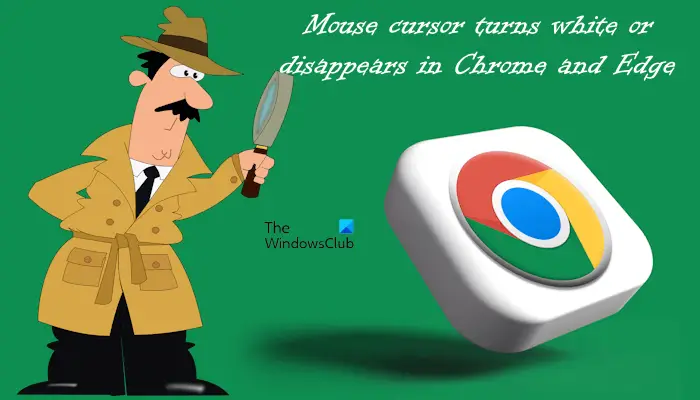
Mouse cursor turns white or disappears in text fields in Chrome or Edge
If your mouse cursor turns white or disappears in text fields in Chrome or Edge, use the following solutions to fix this problem.
- Clear browser cache and cookies
- Disable Hardware Acceleration in the browser
- Roll Back or reinstall your mouse driver
- Change your mouse cursor scheme
- Uncheck the Hide pointer while typing option
- Disable Multiplane Overlay (MPO)
- Reset browser
Before you begin, make sure you update your Chrome or Edge browser.
1] Clear browser cache and cookies
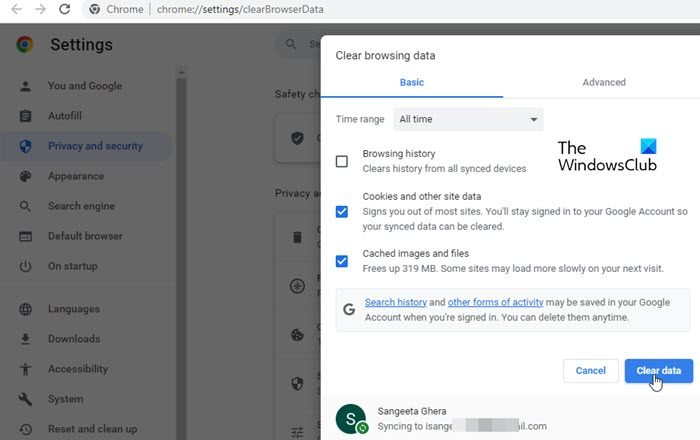
You should also clear the cache and cookies of Chrome and Edge. Clearing the cache and cookies can help fix this issue, as it will delete the corrupted files.
To delete cache and cookies, press the Ctrl + Shift + Delete keys. This will bring the Clear browsing data window on your screen. Now, select the cache and cookies checkboxes and select Clear data. If you want to clear your browsing history, you can also select the respective checkbox.
2] Disable Hardware Acceleration in the browser
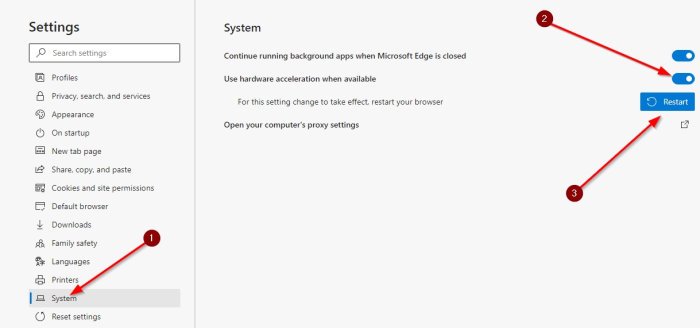
If the issue persists, disable hardware acceleration in Edge and Chrome and see if it fixes the problem.
3] Roll Back or reinstall your mouse driver
The problem might be occurring due to the bad mouse driver. We suggest you roll back or reinstall your mouse driver. If the Roll Back option is greyed out or if, after rolling back your mouse driver, the problem persists, you can reinstall your mouse driver. The steps to do this are as follows:
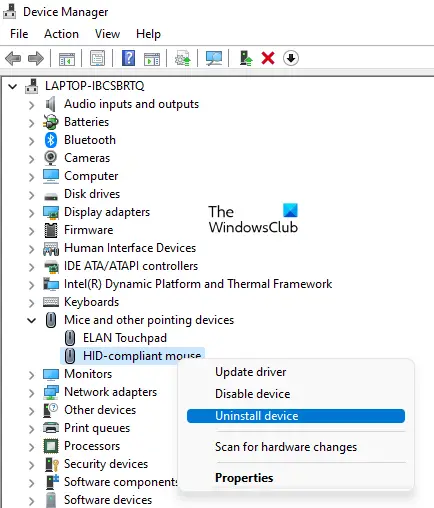
- Open the Device Manager.
- Expand the Mice and other pointing devices branch.
- Right-click on your mouse driver and select Uninstall device.
- Close the Device Manager and restart your system.
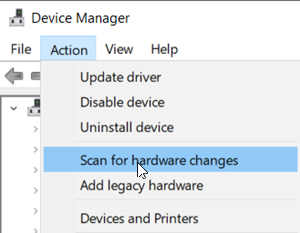
Alternatively, you can also Scan for hardware changes to reinstall your mouse driver after uninstalling it. Windows will automatically install the missing driver.
4] Change your mouse cursor scheme
I also experienced this problem in Edge and Chrome. It is a very annoying issue because you cannot use Chrome and Edge properly due to the disappearing or white cursor. When I changed my mouse cursor scheme, the problem disappeared. You should also try this.
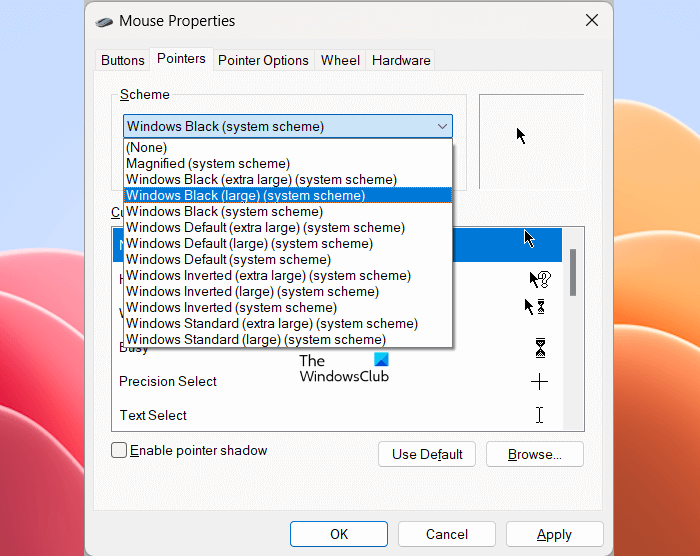
The steps to change your mouse cursor scheme are written below:
- Open the Control Panel.
- Type mouse in the Control Panel search box.
- Select Mouse from the search results.
- When the Mouse Properties window appears, select the Pointers tab.
- Click on the Scheme drop-down and select another mouse cursor scheme.
- Now, click Apply and then click OK.
Check if the problem disappears. If not, try another cursor scheme. You have to use the hit-and-trial method until the problem disappears or you try all available cursor schemes. For me, the Windows Black scheme worked.
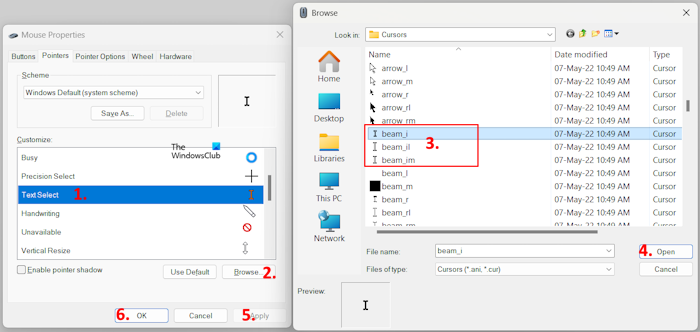
You can also select the black cursor instead of changing the entire mouse scheme. Open the Mouse Properties window by following the steps provided above. Now, go to the Pointers tab. In your current scheme, click on the Text Select option in the Customize box. Click Browse and select any one of the following options.
- beam_i
- beam_il
- beam_im
Now, click Open. Click Apply and then click OK. This should work.
5] Uncheck the Hide pointer while typing option
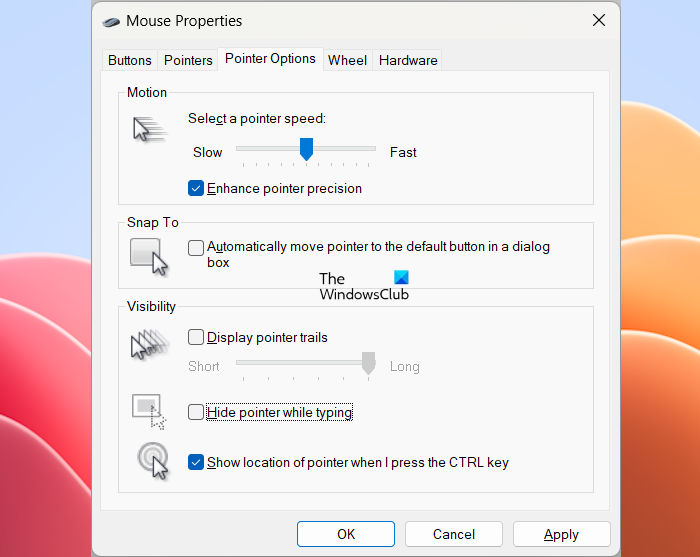
If the cursor is still turning white or disappearing in Edge or Chrome, uncheck the Hide pointer while typing option in Mouse Properties. Open the Mouse Properties window via the Control Panel by following the steps we provided earlier in this article. Now, uncheck the Hide pointer while typing checkbox under the Pointer Options tab. After that, click Apply and then click OK to save the settings.
6] Disable Multiplane Overlay (MPO)
MPO stands for Multiplane Overlay. This feature can be useful while gaming. But a lot of users found this feature to be the cause of this problem. You can disable this feature and see if it helps. To disable this feature, you have to modify your Registry. Therefore, before proceeding, create a system restore point and backup your Registry.
Open the Registry Editor. Copy the following path and paste it into the address bar of your Registry Editor. After that, hit Enter.
HKEY_LOCAL_MACHINE\SOFTWARE\Microsoft\Windows\Dwm
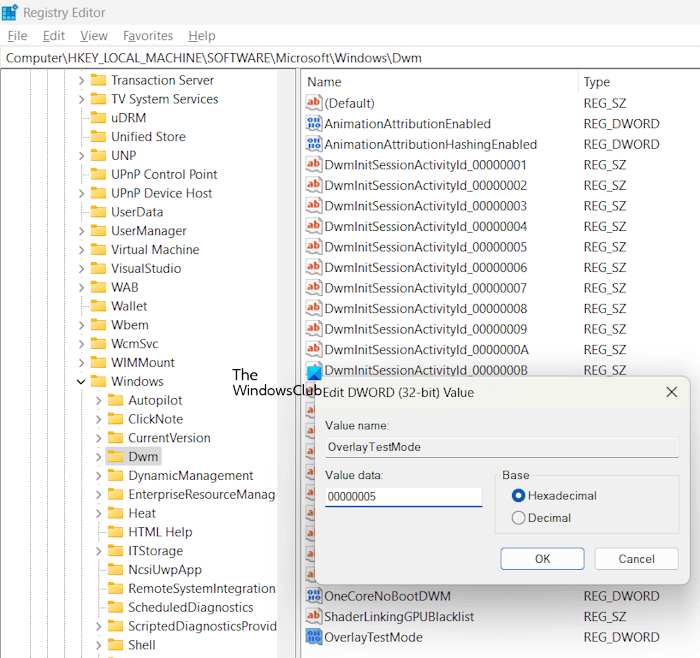
Make sure that the Dwm key is selected on the left side. Right-click in the empty space on the right side and select New > DWORD (32-bit) Value. Name this newly created value as OverlayTestMode. If the value OverlayTestMode is already present on the right side, you need not create it.
Now, right-click on the OverlayTestMode value and select Modify. Enter 00000005 in its Value data and click OK.
Restart your computer and then check if the issue is fixed. If this does not help, revert the changes you made in your Registry by deleting the OverlayTestMode value.
7] Reset browser
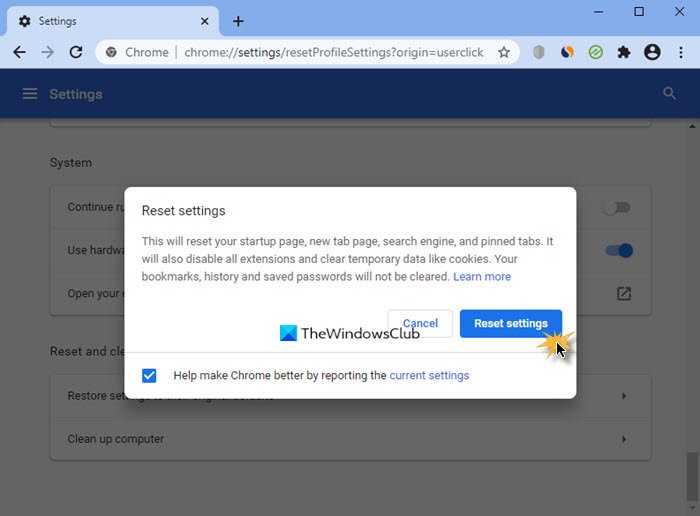
Resetting Edge and Chrome to their default settings can also help fix this issue. This action will reset your startup page, new tab page, search engine, and pinned tabs. The temporary data will also be deleted, and all your extensions will be disabled. Resetting Edge and Chrome will not delete your saved passwords, bookmarks, and browsing history.
That’s it. I hope this helps.
Why is my Google Chrome cursor white?
Hardware acceleration can cause problems in web browsers. It has been found causing this problem in Chrome by several users. In addition to this, the MPO feature of the graphics card can also cause this problem. Moreover, it is also found that his issue is associated with some particular mouse cursor schemes.
How do I stop my cursor from disappearing when I type?
By default, Windows hides the mouse cursor when you type. It is to avoid distraction. But if you do not want Windows to hide your mouse cursor, you can disable this setting. Open your Mouse Properties and uncheck the Hide pointer while typing option.
Read next: Scroll Wheel not working in Chrome.
Leave a Reply